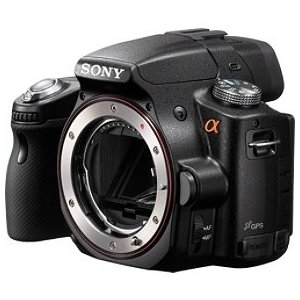While you can pick up either of these cameras new today for a lot less than their original price, the α33 is still around $150 cheaper. So if you’re trying to decide which of these camera’s to purchase, the question isn’t so much if the α55 is better, but if it’s $150 better.
In this article, we’ll try to help you answer that question for yourself, and decide which––if either of these cameras––is best for your needs.
Both cameras share a lot of features. Aside from looking the same, they both feature first-in-class translucent mirrors that do what seems impossible by reflecting light––and letting it through at the same time. This allows for several things, including digital live-view in the viewfinder and continuous autofocus during video recording––a first for any DSLR.
Both shoot photos in RAW or JPEG and videos in beautiful HD 1080/60i recording using the super data efficient AVCHD or versatile MP4 formats. Both allow for full manuel or automatic control of exposure and focus during still photography, and have fully articulated monitors.
The α55 pulls ahead most obviously in the area of resolution, with 16.2 megapixels to the α33’s 14.2. Honestly, unless you plan on blowing up your photos to wall-sized posters, this won’t be a noticeable difference, but more resolution never hurts either.
More significant in our opinion is shooting speed. While the α33’s 7fps at full resolution is nothing to be ashamed of, the α55’s blazing 10fps leaves it well behind when capturing fast activity.
One feature on the α55 that the α33 lacks completely is built in GPS. This allows for geotagging of photos and videos.
I personally did a lot of traveling for different projects in 2011, and carried an α55 with me every step of the way. Since then I’ve enjoyed the ability to organize my photos based on location, which was fun, even if it probably doesn’t have many practical applications for most photographers.
So is the extra money for the α55 worth it? That depends on what you want to do.
If you are buying the camera to use for photo-shoots where higher resolution images may be required, or sporting events where professional-class shooting speeds are a plus, then our answer is definitely a yes for the α55.
However, we also know many individuals who have purchased these cameras primarily for their video capabilities. The fact of the matter is, the α55 offers absolutely no advantage over the α33 in this area. The α33 shoots in the same AVCHD format with the same Phase Detection autofocus as the α55. It also shares a dedicated ‘record’ button and audio input for virtually any microphone type with its more expensive counterpart.
So if you’re planning on purchasing this camera mainly for video shoots, save yourself some money and go with the α33.
If you have any questions that this article didn’t answer, feel free to leave them in the comments and we’ll do our best to answer them. For a quick comparison list of features, look below:
What you get with both cameras:
- Translucent Mirror technology.
- Continuous Phase-Detection Autofocus in movie recording.
- Digital display live-view in view-finder with 100% framing accuracy.
- Fully articulated monitor display.
- 1080/60i AVCHD/MP4 video at 29.97fps progressive image sensor output.
What you get only with the α55
- +2 megapixels.
- +3 frames-per-second shooting speed.
- Built in GPS for geotagging.




Thank you for your comparison. I currently have the a33 and just out of the blue yesterday while shooting it stopped. No display or power functions. I started looking at a replacement camera body and found an a55 for sale for $200. My question is will they use the same lenses. Thank you for your response. Keith
ReplyDelete